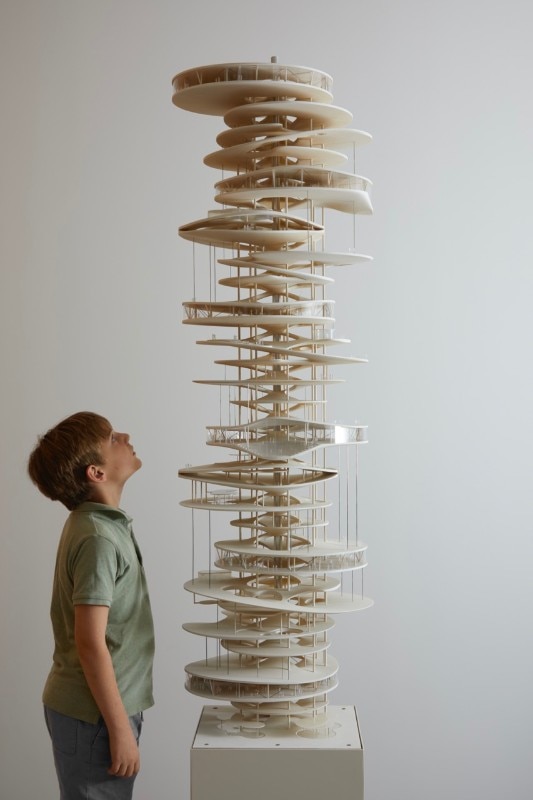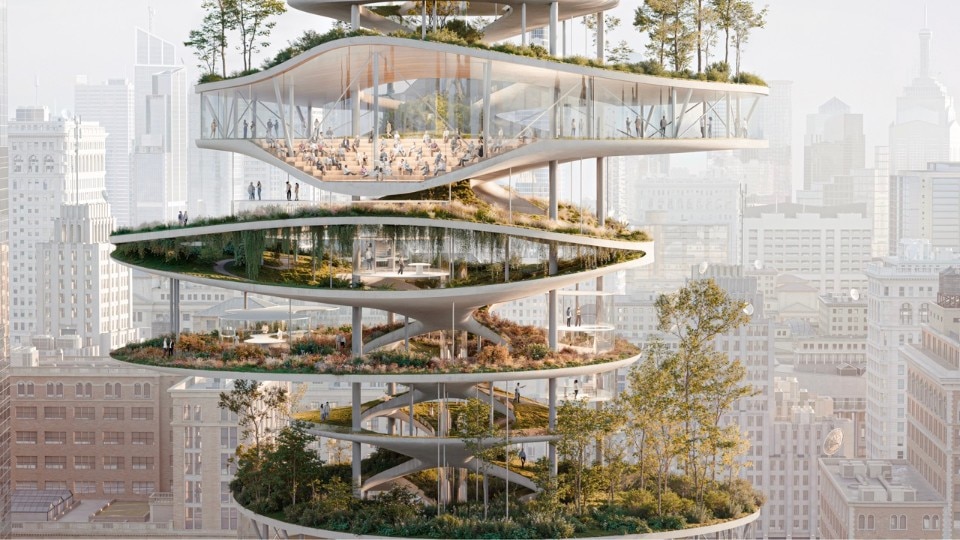An architecture that emerges from an experimental process, as in a cell culture, whose inhabitants are not only humans but also parasites, bacteria, micro-organisms proliferating in its body, composing a biosystem in which artifice and nature are symbionts. And what if this building could not only reduce its ecological footprint and consumption (like a Neutral Zero Energy Building) but even transform the ecosystem in which it is located through reforestation, air purification, increased biodiversity and sustainable use of resources?
This is what Neri Oxman wonders about from her Oxman Lab in Manhattan through EDEN tower, the concept for an “ecologically programmed” and replicable skyscraper based on a multifactorial analysis of the specific environmental characteristics of the context in which it is located.

Its form results from a generative design process applied to computational data and based on algorithms and artificial intelligence. Conceived to maximise the ecological well-being of all species present with minimal resource consumption, the project integrates living spaces with ecological infrastructures: the prairie and forest ecosystems that grow outside manage thermo-hygrometric regulation and other natural processes; the indoor spaces house dwellings and services, while the interstitial zones include areas for the supply of resources (such as timber from a young forest), foraging and pollination from flowering meadows.


Visual harmony and aesthetic
Now, more than ever, interior design is a balance of form and function, a dialogue between architecture, materials and finishes that transform and make the most of the space involved.




